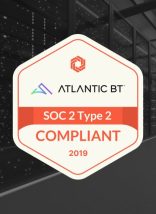Government agencies have a special obligation to create usable websites. Usability is the digital extension of good public service. There is one significant usability problem that we encounter most often. Government sites can struggle with poor information architecture (IA).
Problem #1: Information Overload
It can be tempting to put as much information as possible on your website. This is partially driven by the desire to inform the public. Unfortunately, putting too much information on a site or a page is detrimental. It will actually hurt your site’s ability to impart information to users.
Your website is an opportunity to answer common questions before the user has to pick up a phone or send an email. By not providing important content, everyone’s jobs can become more difficult. You’re either burdening your own staff or missing an opportunity to serve the public. But, if you’re putting that content online in a way that makes it too difficult to find? Well, you’re probably going to wind up getting calls anyway.
Problem #2: Silo Mentality
Government sites should not need users to know anything about the structure of an agency. Organizing information into little fiefdoms on your website will hurt findability. Instead, organize content based on users’ needs. This strategy is at the heart of effective information architecture.
One of the biggest silo mentality problems we see are forms, reports, and other documents buried on program or department pages. Usually, they are simple file attachments. When you do that, you are making it harder for people to find your documents. Their only option is to navigate through your content to find what they need. This leaves out the part of your audience Googling your information. It can also hurt those using your own site search. Even for users who want to use your navigation, you’re requiring them to find the exact right page. Then they have to read through the content to find what they need. Think of your users!
Problem #3: Confusing Labeling







